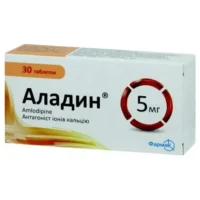Description
Doxazosin (Doxazosin) Tablets 4 mg. №20
Ingredients:
Each tablet contains 4 mg of Doxazosin.
Dosage:
The usual dosage is one 4 mg tablet daily. Dosage may vary based on individual response and medical condition.
Indications:
Doxazosin is indicated for the treatment of hypertension (high blood pressure) and benign prostatic hyperplasia (enlarged prostate). It works by relaxing blood vessels and improving urine flow.
Contraindications:
Do not take Doxazosin if you are allergic to it or similar medications. Consult your doctor before use, especially if you have liver or kidney problems.
Directions:
Take one tablet by mouth daily, usually in the morning or as directed by your healthcare provider. It can be taken with or without food.
Scientific Evidence:
Pharmacological Effects: Doxazosin belongs to a class of medications known as alpha-1 blockers. It works by relaxing the muscles in the prostate and bladder neck, making it easier to urinate. Additionally, it dilates blood vessels, reducing blood pressure.
Clinical Trials: Clinical trials have shown that Doxazosin is effective in lowering blood pressure and improving urinary symptoms in patients with benign prostatic hyperplasia. A study published in the American Journal of Hypertension found that Doxazosin was well-tolerated and effective in reducing blood pressure levels.
Additional Information:
It is important to monitor blood pressure regularly while taking Doxazosin to ensure optimal control. Avoid sudden position changes to prevent dizziness, especially when getting up from a sitting or lying position. If you experience any severe side effects, contact your healthcare provider immediately.




